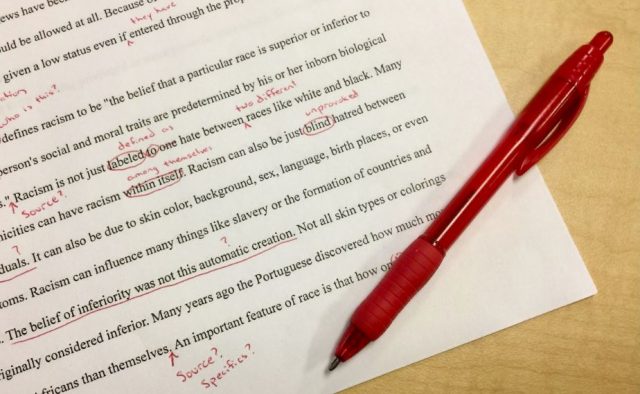English errors can make reading an article quite tough and challenging work. For instance, “Hunters please use caution when hunting pedestrians using walk trails.”
Interesting statement, isn’t it? But what is wrong with it? Yeap, you are right! It lacks several punctuation marks. These marks are essential because they make the language easier and clearer to understand. When left out or misused, they lead to confusing and silly sentences. Like the sentence above, it looks like the person is asking hunters to be careful when they are hunting pedestrians who are walking on the trails.
Instead, it should be written like, “Hunters, please use caution when hunting. Pedestrians using walk trails.” It now makes so much sense. No one wants hunters to hunt pedestrians!
With punctuation marks, sentences have so much more meaning. There are certain misunderstandings that can get solved with punctuation marks.
Common punctuation marks
There are too many punctuation marks in English and each of them, regardless, serves a critical role. Here are a couple of the most commonly used marks.
The period (.) – this is usually inserted at the end of a sentence and helps show the reader when it is appropriate to stop for a moment. After the break, readers move on to the next thought.
Comma (,) – a comma is used to create a pause in the middle of the sentence. They are excellent when making lists and splitting two clauses of the same sentence. It offers a chance for the reader to take a brief break when reading.
Question mark (?) – just as the name suggests, a question mark allows the reader to know that a question has just been asked.
Exclamation point (!) – the exclamation point is used to stress on a sentence and shows extreme emotions of excitement and anger.
Colon (:) – its main function is to prepare the reader for whatever is next. It is also used to introduce lists and emphasize what is important.
Semicolon (;) – is used to give readers a much longer break than what is offered by a comma. The biggest issue with this mark is that most non-native speakers do not know how to correctly use a semicolon. If you are uncertain of how to use it, skip it altogether.
Apostrophe (‘) – this is most commonly used as a possessive mark. It shows items that belong to someone else. It is used as a contraction.
Quotation marks (“) – they are used when a person is speaking or when quoting what someone else said.
Hyphen (-) – these are for connecting words and connecting two commonly used parts of the word.
5 common English writing errors that you can avoid
- Quotation marks for emphasis
Quotation marks, as stated above, are used to show something that someone has already said. They should never be used to emphasize a word. Just because you can use air quotes when speaking does not mean that you should use them in your written language. Use CAPS when you need to emphasize on anything.
- Possessives and plurals
People often have trouble using apostrophes. It does get confusing. When writing, figure out what you want to say and how you want to say it. With this knowledge, you will know when mistakes are made when you say: “I want to pay someone to write my paper for me”. If you mean that something belongs to something else, use an apostrophe. When you are trying to say a huge number of certain things, find out where the plural is (-s) or (-es).
- Using too many commas
Sometimes, as a writer, you are so excited that words are streaming from your mind. While commas are great for slowing down your sentences, they should not be used to change thoughts. Reread your sentences and figure out whether they need commas or periods. You can also make use of connecting words like but, etc. you will notice these issues in your online resources.
- Not using enough commas
If you are not using too many, you are probably using too few. Here are the best instances to include commas:
- When listing items
- When including conjunctions
- When using a specific phrase
- During the listing of locations and dates
- And when adding a statement that is not necessary.
Forgoing hyphens
These are not used often, but they are necessary. They connect ideas. They help our ideas be glued together. These are necessary numerous times. For a statement like a dog-eating cat, you are using “dog” and “eating” together in a situation where when used together; these words will mean something completely different.
Another great example is small-business owner and small business owner. Leaving out the hyphen brings out a completely different meaning than what the writer originally meant to say. For essays, therefore students must be aware of the different punctuation marks and how they ought to use them to bring more meaning to their sentences.
BIO
William Stewart is a prolific author who is keen on language learning and puzzles. He is one of those who thinks that the Oxford comma phenomenon is what everyone should know if dealing with English.

A professional writer with over a decade of incessant writing skills. Her topics of interest and expertise range from health, nutrition and psychology.


